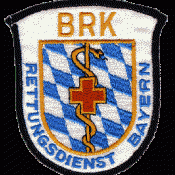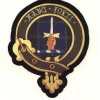Leaderboard
Popular Content
Showing content with the highest reputation on 07/24/2011 in Posts
-
www.abbreviations.com may help in such cases. It still is a guessing, but works most of the time for me. An explanation of acronyms in the text at the first time used sure is a help and makes reading easier. Remember: a posting sure is read more times than written - so one should take some care to write it for all those reading it.1 point
-
It has been a while from when last I complained about usage of local acronyms on this international site. If I use an acronym, I immediately translate it. I realize what I use colloquially may not make sense to an Israeli, a German, or anyone to whom English is a second language. Then there is the matter of the UK and USA being devided by our supposed common language. Just commenting and not complaining, but I note Dusty seems to use a UK style English spell-check. If asked, he'll also translate, and I usually end up kicking myself, as I knew it under a different phrasing. (Spell Check on this Dell computer is down, and the Toshiba WITH spell check is not nearby today.)1 point
-
OEC is Outdoor Emergency Care, offered through the National Ski Patrol. And to the OP,I have been taken that course, years ago before getting into EMS. It doesn't give really give you all that much "wilderness" training, it's basically a medical first responder course with a few extra skills like chair lift evacuation, boot and helmet removal, and some more info on environmental emergencies (mostly winter, aka hypothermia, frostbite). Not much in the way of alternative techniques/backcountry stuff - it assumes you are with an established patrol with basic equipment. Anything like mountaineering/orienteering, avalanche SAR and survival, and other backcountry stuff are extra certification courses through NSP. So, NO, I would not say that OEC + EMT-B = WEMT and the OEC course would be waste of time if you are not planning on being on a patrol somewhere, not going to teach you a thing and they tend to be waaay too intense about it for the level of care actually taught.1 point
-
I "is" a EMT-B, but have no idea what OEC stands for. Could be Office of Emergency Communications, for all I know. I also am guessing that WEMT is Wilderness EMT, and welcoming correction if I am wrong on that count. I personally prefer a Ginsu knife over the German cutlery, but German binoculars over Japanese ones.1 point
-
This has been my experience as well (a downed little bird) pilot drove tib/fib into dirt, incomplete amp, these as you describe in the crush category are very insidious type hemmorrhage, many times unrecognised as life threatening in the field. Herein after this thread to be referred as: The 2c4 protocol Well written mate, civy side has much to learn from the sandbox experience. Dragoon what flag do you fly, the meatballs and marinara hint of Italian, maybe Portuguese ?1 point
-
I applied a few in the military. The injuries there were significant. At the same time I also applied several compression dressings to limbs with major injury where a tourniquet would've been applied if not for the compression dressings. (Note: I wasn’t a corpsman aka medic, just a grunt with good training.) Since going to the civilian side I've applied three. The first patient was to an elderly female who was knocked down by a flatbed tractor-trailer that was backing up. Her legs were run over by the rear wheels of the trailer. Both legs were crushed. They looked like raw chicken legs that had been pulverized with a sledgehammer and felt like a tube sock full of marbles. Both legs were dressed with trauma dressings, splinted and elevated. There was no spurting blood; just continuous bleeding where skin was avulsed or at open fractures. She had begun to bleed through the dressings and I decided to apply a tourniquet to each leg. One was placed two inches distal knee and the other was about three inches proximal to the knee because her knee was twisted medially. Both tourniquets were improvised with cravats. I wrapped the cravats wide, twice around the leg and used a pen to twist and tighten. The intent was to stem the flow of bleeding. The second time was for a bicycle deliveryman who was struck by a garbage truck and still underneath it. After the vehicle was secured, my partner and I crawled underneath the garbage truck to remove him. My partner immobilized his head as I assessed the patient. A rapid trauma exam revealed a conscious, Chinese speaking male with an amputation of the right leg distal to the knee. The leg was still attached by some muscle and skin. I decided that because of the amount of blood that was on the pavement and the location (under a truck) he was getting a tourniquet right then and there. It met 2c4's criteria for application. I wasn't going to play around under a truck with limited space trying to apply a direct pressure dressing and bandage. I'm sure if I did attempt it that the quality would have been sub-par. So I applied the tourniquet above the knee because the amputation was just distal to the knee. Again two inches above. This time I had a commercial tourniquet, the C.A.T. Application was extremely easy and I twisted again until I believed the bleeding had stopped. After the patent was extricated and in the back of the ambulance we were able to properly dress and bandage both stumps and perform a more detailed physical exam. Each time was a different situation where a tourniquet was applied. After they were applied to the first patient, we did apply another trauma dressing to the ones already in place. On arrival at the hospital the injuries had not bleed through the additional dressings. The second patient never bleed through his dressings. On follow up with him the surgeon told me the tourniquet was left in place and the patient was taken to the OR with it. Application of tourniquet is flexible but you need to be educated on how to use it in addition to when.1 point
-
Sorry about the minimal information I just didn't know how much pertinent information would be needed to get a response and I was trying to keep my opinions out. I know that trauma code ROSCs are slim to none. I have been on many and most are called on scene. This was a 20 y/o male who was unconscious with weak pulses prior our arrival. His facial bones were floating and had persistent blood draining into the airway (coming from the roof of his mouth ). There were no other signs of trauma to be noted. We do carry an AED. My partner and I were the first to that PT and I immediately started compressions as he cleared the airway. The Ambulance was pulling up as this process was initiated which is why I opted for their Lifepack instead of my AED. I continued continuous compressions and my partner continued constant suctioning (CCR protocol). The Medics applied the pads and saw PEA and I went back to compressions. The medic began to attempt IV access (Arrest protocol is IO). Meanwhile a flight crew arrives and asked to check the rhythm. The nurse took over the airway and dropped an OPA and attempted to bag. CPR was stopped for longer and longer periods until the PEA rhythm went to asystole. Epi was never given, advanced airways never considered, compressions were stopped for long periods and several strips were printed to get "timing" right. Now I know that this pretty much a lost cause but... I was expecting work this kid hard and get at least a round of drugs in him, pump them around a bit, maybe even secure an airway and see what happens and then make a call. I would consider a reversible cause of hypoxia due to the blood blocking his airway. But once again there still was little to no chance but if there is any chance shouldn't we be giving our best effort to at least see if something changes that indicates he is part of the .03%? - I by no means am saying that anyone was wrong or write but I fig I would just ask for other opinions to maybe see a different perspective.1 point
-
There's about a one in one thousand chance of bringing back a traumatic arrest. Some protocols give the option of not working them at all. If you're asking if more should have been done by the medics? I don't know. Wasn't there. Was there tracheal deviation? Lung sounds? Skull depression? Posturing? Pupils? Can basics combitube where you are? Too much info missing. I'm fairly certain that if the medics thought it was workable, they would have worked it. My opinion is based on information given only. Without the whole story, opinions don't mean much.1 point
-
1 point
-
welcome to EMS, if you have not realized yet, only about 4-5% of your calls are true, life-threatening emergencies.1 point
-
Because EMS is run by these people. But, ever notice that most of these incidents are with fire departments? Obviously there is an intelligence gap there.0 points




